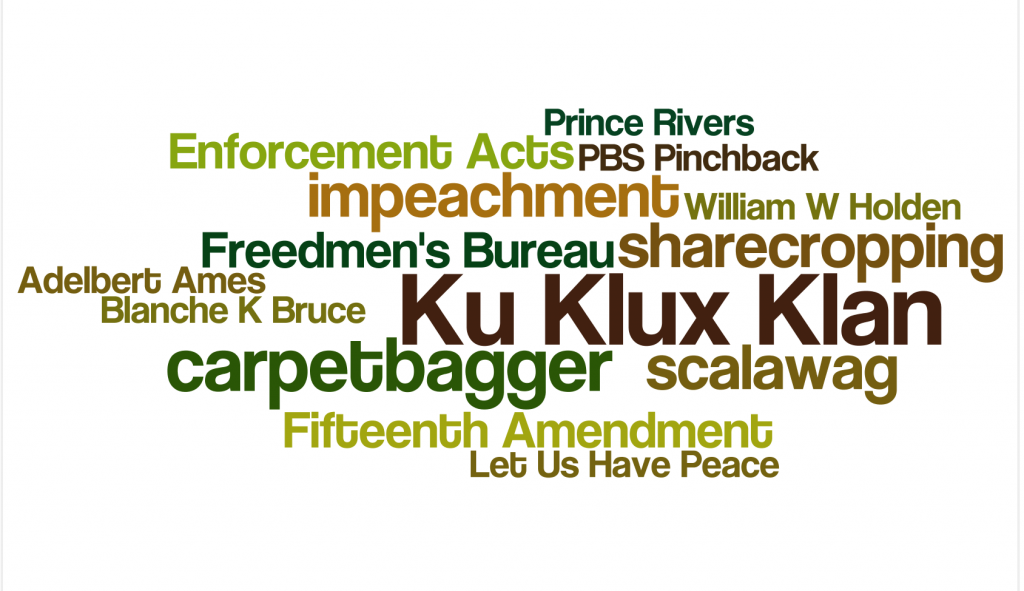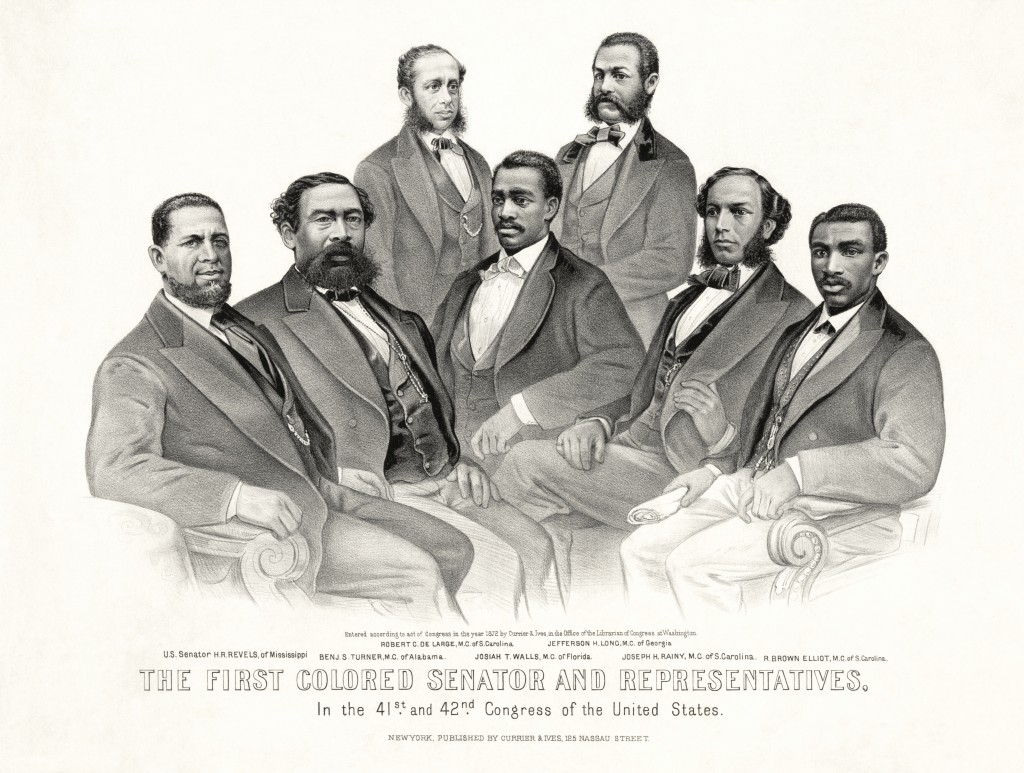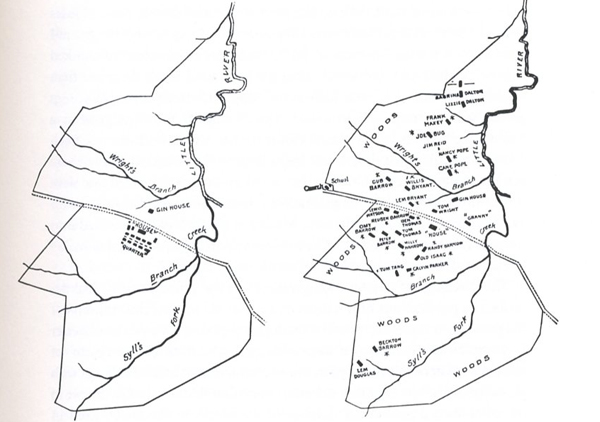Political life in the South during Reconstruction kept changing at a rapid pace. In his book, A Short History of Reconstruction, Eric Foner charts a remarkably complicated set of factors that elevated some groups over others at different times across various states during the period between 1865 and 1877. Once Congress wrested control of the political restoration process away from President Johnson in 1866 and 1867, the result was a brief revolutionary heyday for black political leadership. Yet there was always violent resistance lurking in southern communities determined to stop participation in government by the ex-slaves. The fight culminated with the battle to enforce the Fifteenth Amendment and suppress the rise of the Ku Klux Klan across the South. This was a challenge that even a more conservative figures in the Republican Party seemed to embrace –at least at first. President Grant led the fight to crush Klan-inspired political violence –a determination that surprised some contemporaries who had voted for Grant under the slogan, “Let Us Have Peace.” Yet, even though the post-war Klan was crushed by federal action in the early 1870s, the extent of white support for black politics seemed to collapse as the 1870s drew to a close. Consider some of the following images and see if you can explain any or all of them t can be used to help illustrate important points about American political and economic life in the South during the 1870s.
Word Cloud inspired by Foner’s Short History
Black Senators and Congressmen, circa 1872
Anti-Freedmen’s Bureau political cartoon (1866):
Map of the Barrow Plantation, during and after slavery:





Kelly Daw
The Southern Republican party attempted to reshape the south through racial relations (as seen when they embraced the attempts to suppress the Ku Klux Klan as mentioned in the discussion post), education, and economic development. Foner says that even though they made some progress, they were never fully able to fulfill all of the objectives they started out with (Foner 156). For one thing, even though Southern Republicans helped to get public schooling from the state, it was not an easy task to integrate the children in these schools. As for economic development, plantation owners couldn’t control black people as they used to before, and they had many complaints against the government for taking away their laborers. In the Anti-Freedmen’s Bureau cartoon above, people are angry with the Bureau and Congress for taking away their “rights” to force blacks to work on their plantations. They claimed that to not force them to work is keeping them in “idleness” and that this was negatively affecting them and their economy.
Devin Pratt
Politically and socially, the 1870s was a time filled with turmoil for post-war America. Following the abolition of slavery, the freedman’s bureau was formed in an attempt to help freed slaves get on their feet and integrate into the American society. The bureau was largely opposed by President Johnson, and his opposition reflects the various sentiments towards black suffrage following the war. While many people were in favor of abolition and the 15th amendment, few at this time believed that blacks should be treated as completely equal.
What the freedman’s bureau aimed to accomplish was to assimilate the freed slaves into the American labor force. Many of these former slaves turned to farming in order to make a living, either through sharecropping or in some cases land granted to them by Field Order 15. Share cropping, the more common practice, was when a former slave would rent out a portion of land and farm it, keeping part of the harvest for himself and giving the rest to the owner of the land. This is what the map of the Barrow plantation during and after slavery most likely depicts. The first photo shows the original plantation with the manor house and slave quarters centrally located, while the photo after slavery shows various smaller houses scattered across the land, most likely inhabited by former slaves working the land as part of a share cropping operation.